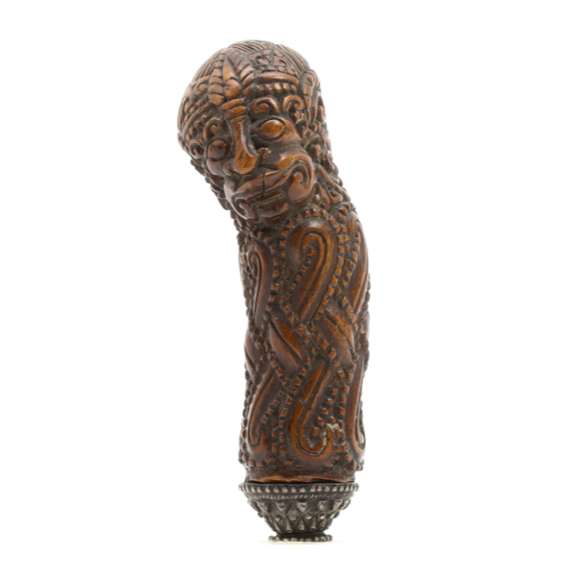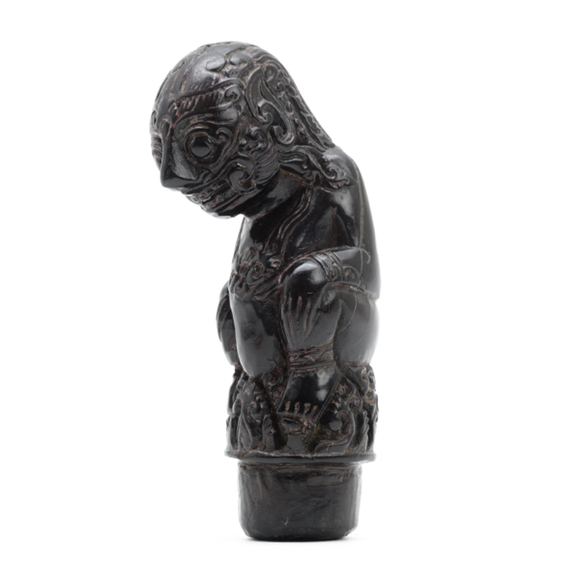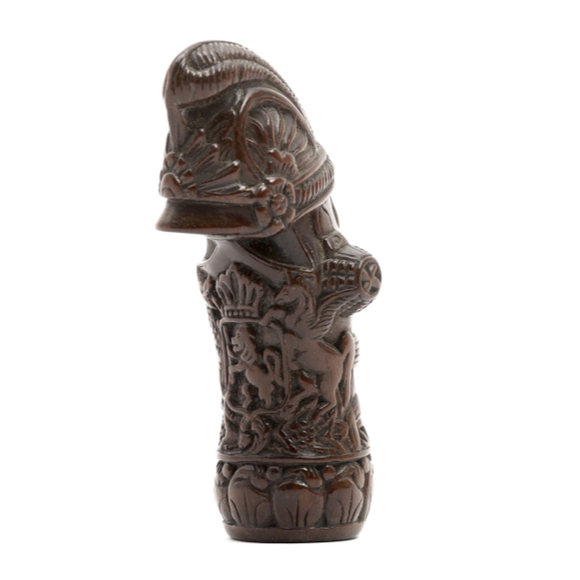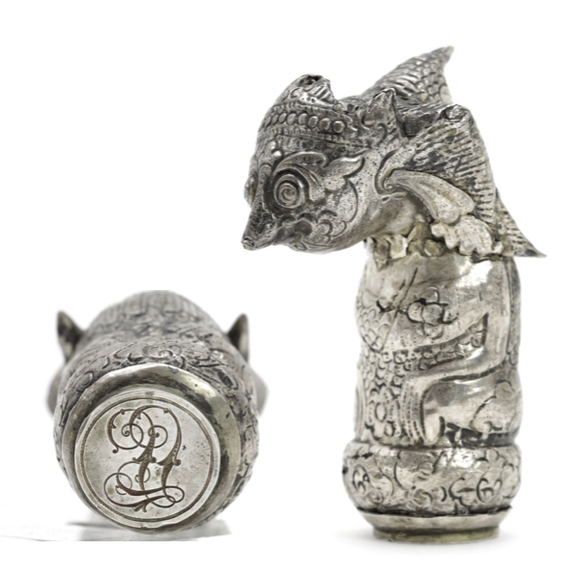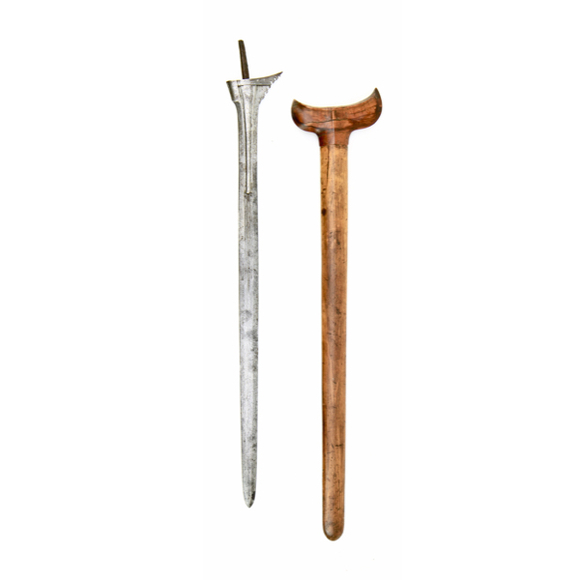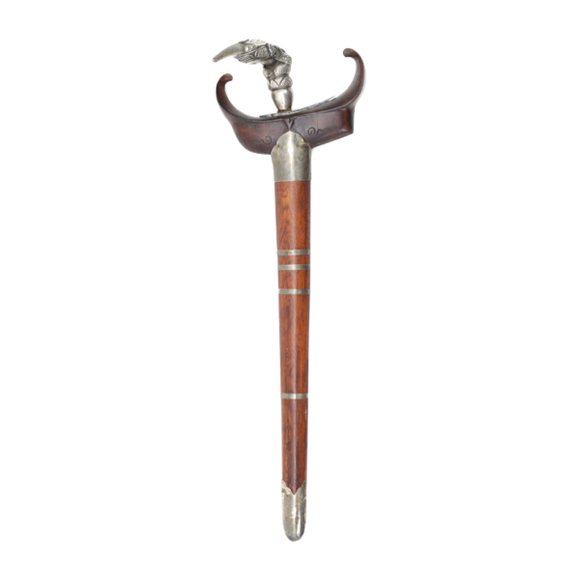19th century, probably originating from Cirebon.

Sheathed 63 cm
Keris 57.9 cm
45.4 cm
Base 17 mm
Middle 6.5 mm
5 cm from tip 5 mm
Ganja 104 mm
Middle 28 mm
5 cm from tip 16 mm
423 grams
9 cm from base of blade
Iron, steel, nickel (pamor), wood, pigments, lacquer, brass, glass
Bali, Indonesia
19th century
Description
A humble-looking Balinese keris, when sheathed, but unsheathe it and an impressive blade with magnificent high-contrast pamor is revealed.
The straight blade is referred to as dapur lurus. It is said to signify striving for inner refinement, resisting temptation, and distinguishing between good and evil.1
The blade geometry has a prominent center ridge and slightly hollow ground surfaces on either side. The gandik (base of blade) with stylized elephant trunk and a separate ganja (base plate). There are two grooves at the base of the blade.
Pamor
It is forged with a wild pamor of almost flaming streaks and speckles of nickel. This type of pamor is sometimes called wusing wutah and reminds of the peel of a watermelon.2
From a distance, the color scheme is silver and black, but upon close inspection, one can see that the silver consists of two sheens, a matte one with shimmering lines of silver inside it.

Danganan
The abstract danganan (hilt) is referred to as cecekahan or cekah redut meaning something like "uneven notches". The standard version of this hilt has 11 notches and is called cekah solas; "eleven notches". This particular one has 27 notches.
Such hilts were believed to be mainly carried by elite soldiers and palace guards.
Opinions differ on what these hilts represent. One theory is that they are a stylization of Balu Mekabun (the veiled widow), also known as Durga, the goddess of war. The notches are said to represent the folds in her sarong.3 There is also a probability that it is mainly ergonomic, as this hilt provides a very good and secure grip, much better than most keris hilts.
On top of the hilt are inscriptions of letters in Western script:

It appears to read:
"MDP SK OLKA
12"
Scabbard
The main scabbard is made of two plates of wood jointed together, called pa-nyambung in Balinese, with on top the wider part called hurangka.4 The latter is in the shape of batun poh (mango seed). The entire back of the pa-nyambung and the tip on the front are painted with yellow pigment.
Some notches are carved at the scabbard's mouth.

Notes
1. Pande Wayan Suteja Neka; Understanding Balinese keris, an insider's perspective. Neka Art Museum. Ubud, Bali, Indonesia, 2014. Page 3.
2. Pande Wayan Suteja Neka & Basuki Teguh Yuwono; Keris Bali Bersejarah. Neka Art Museum. Ubud, Bali, Indonesia, 2010. Pages 97-98.
3. Karsten Sejr Jensen: Krisdisk. Chapter 7. Citing Cedric Le Dauphin: The Hilts of Krisses. Chaos, Paris 2002, p 165.
4. C. Clyde Barber; Dictionary of Balinese - English. Aberdeen University Library , 1979.

















A Madurese keris hilt, carved from dark hardwood in the form of a Dutch cuirassier.

